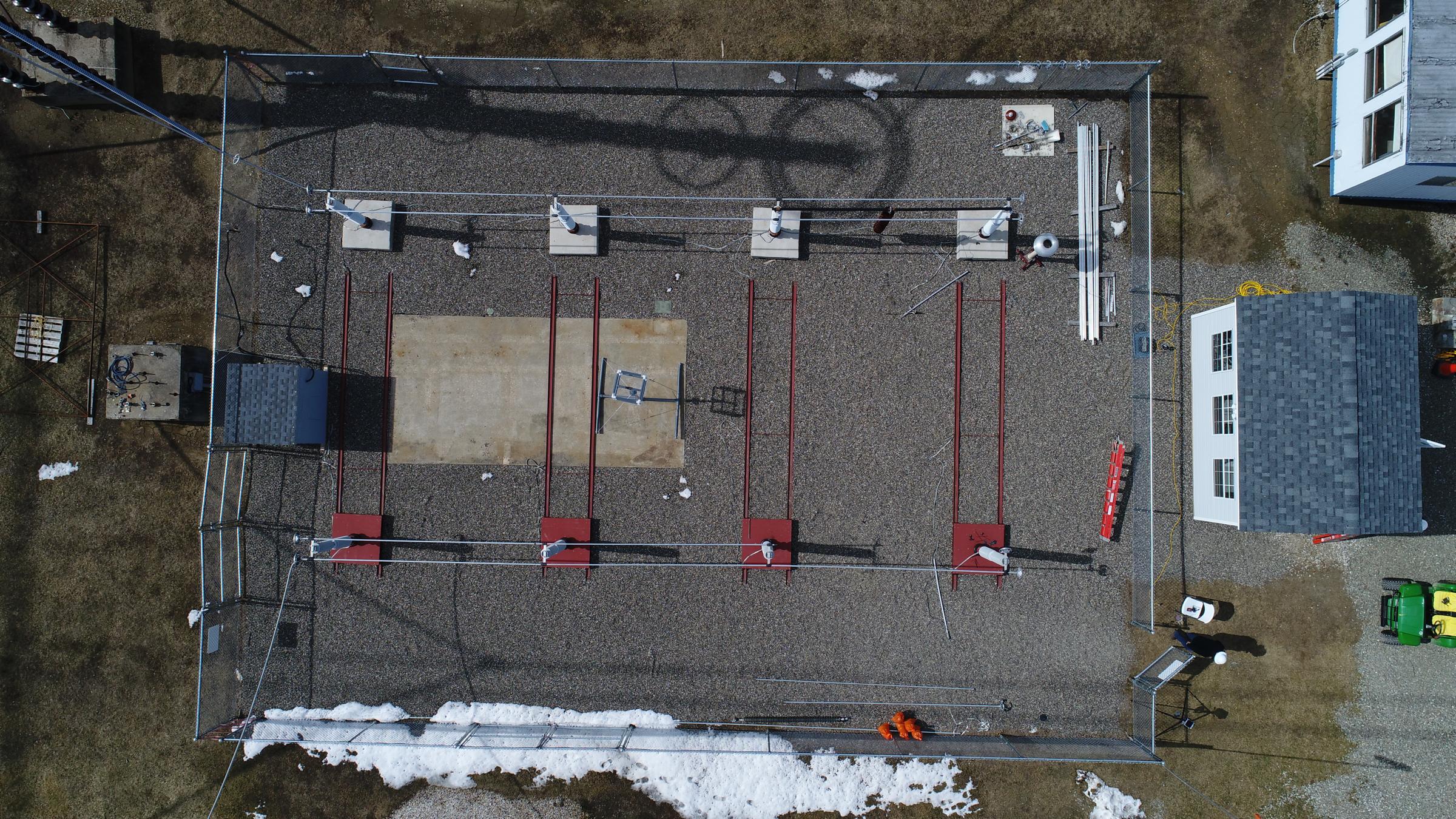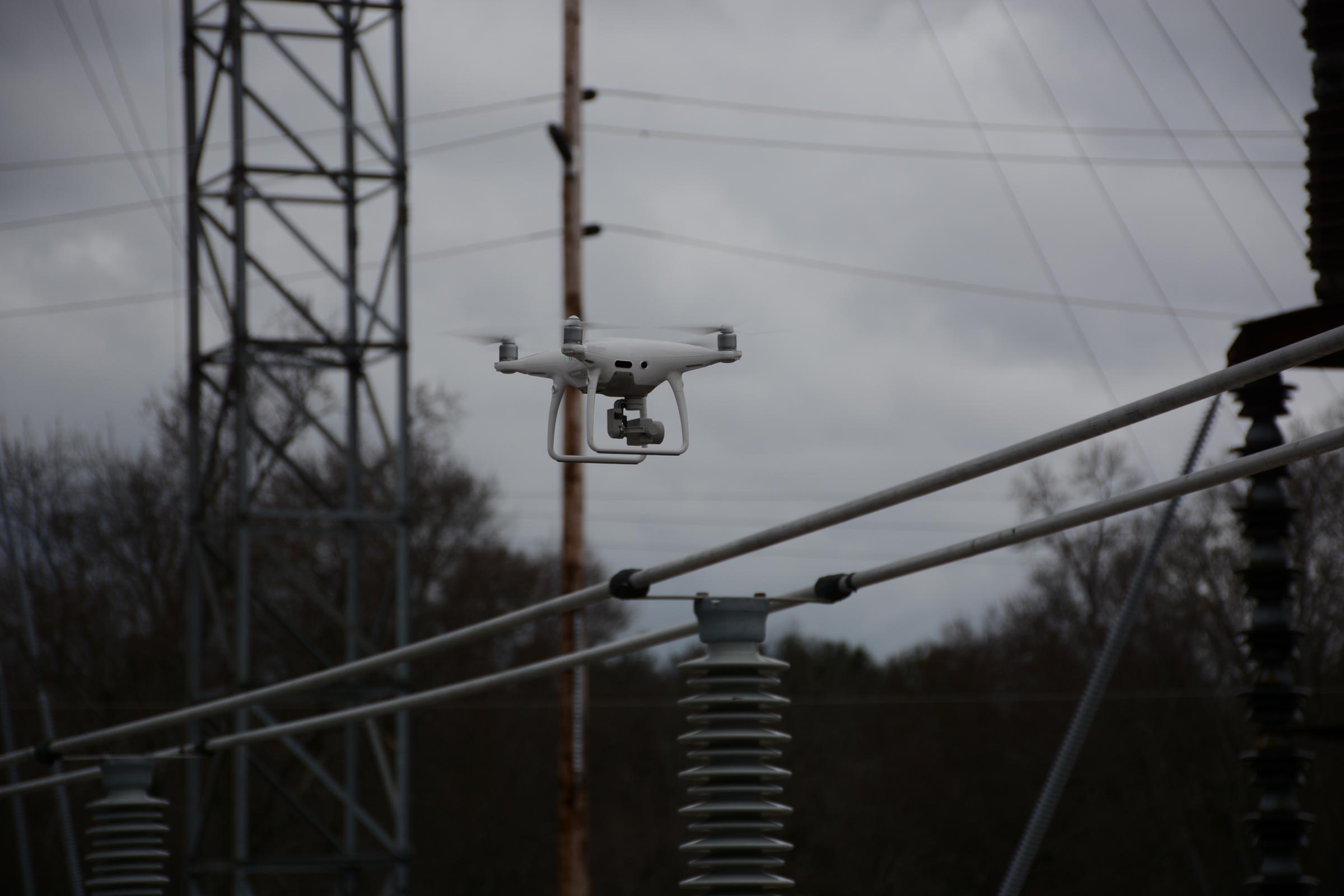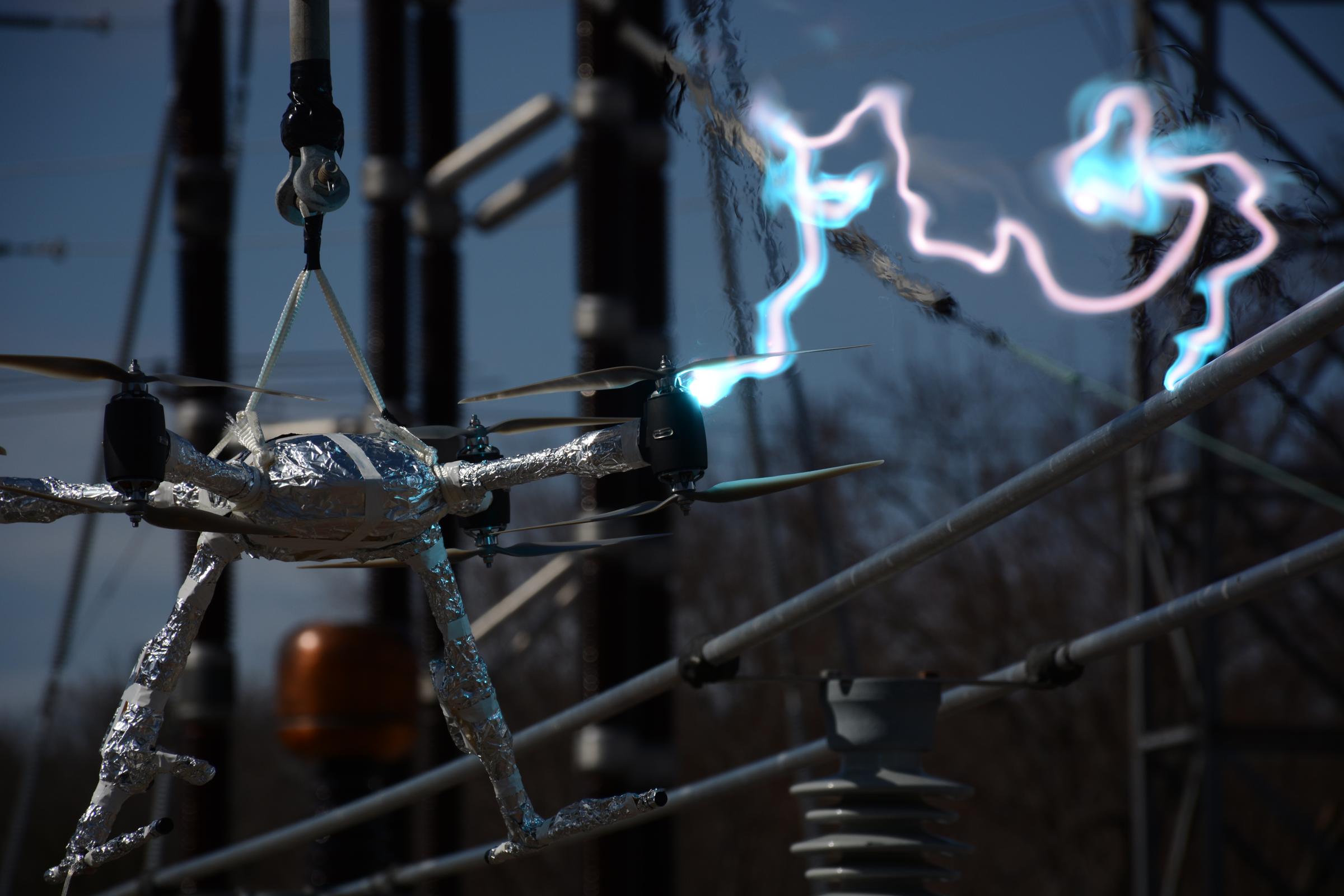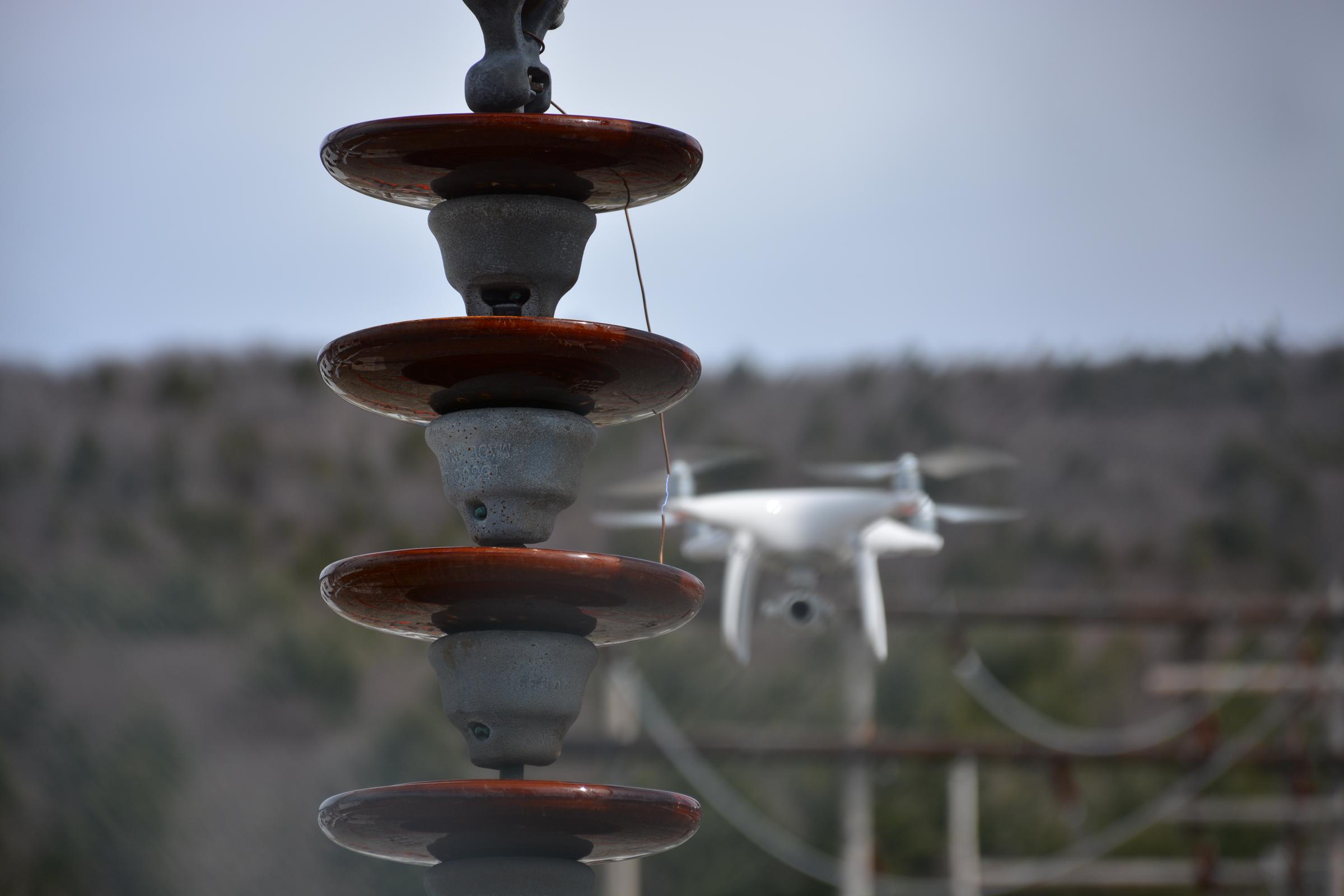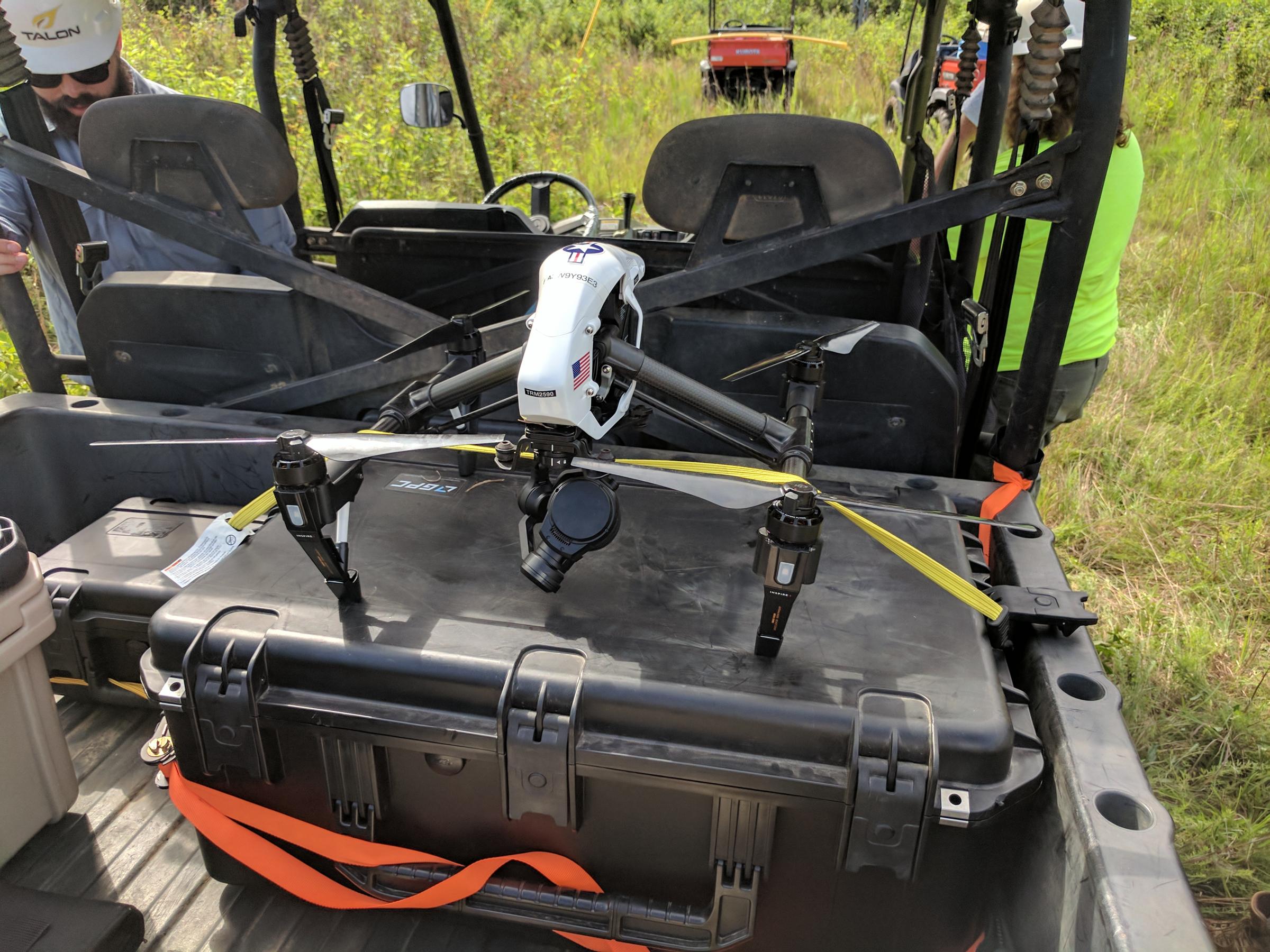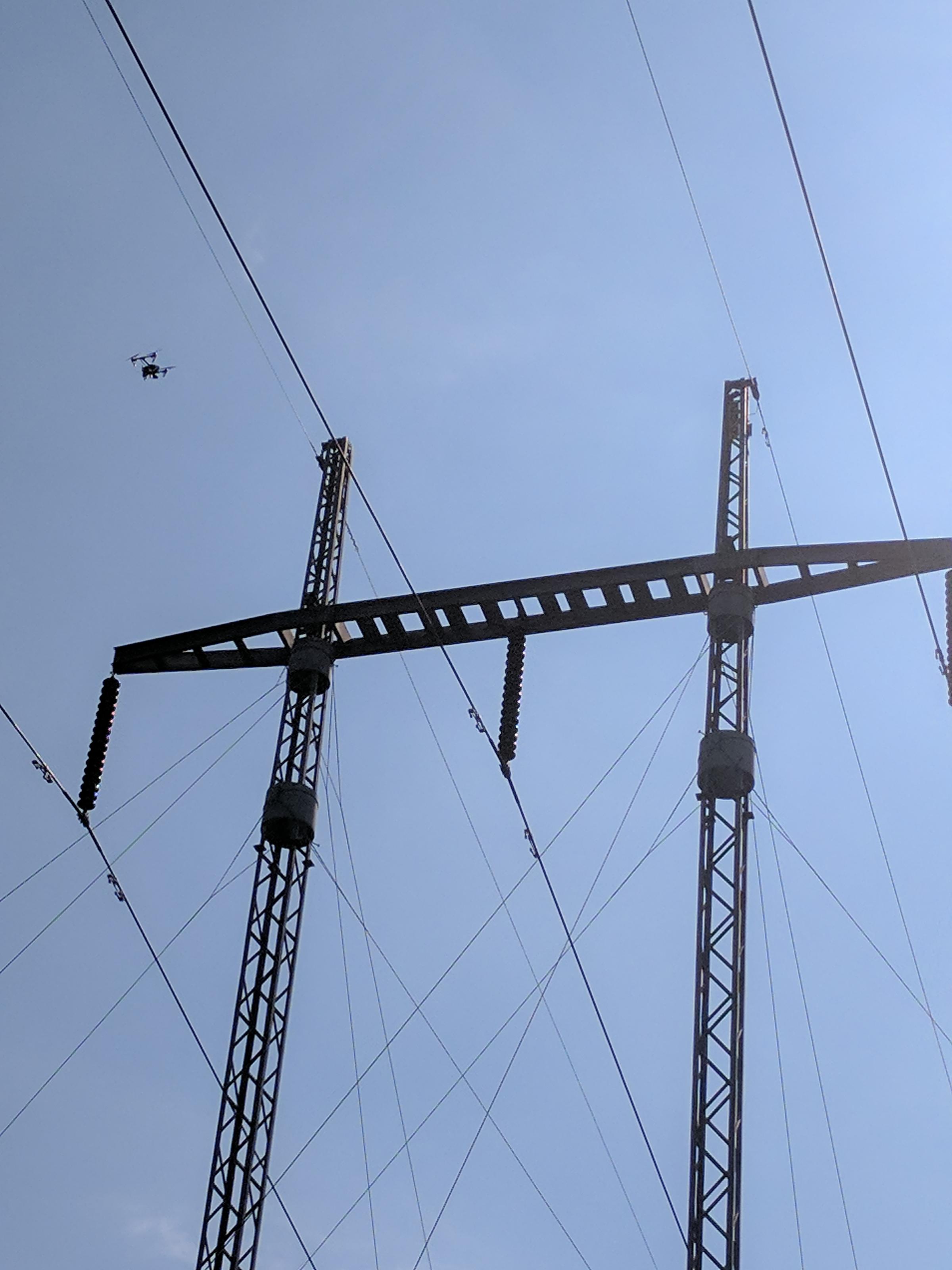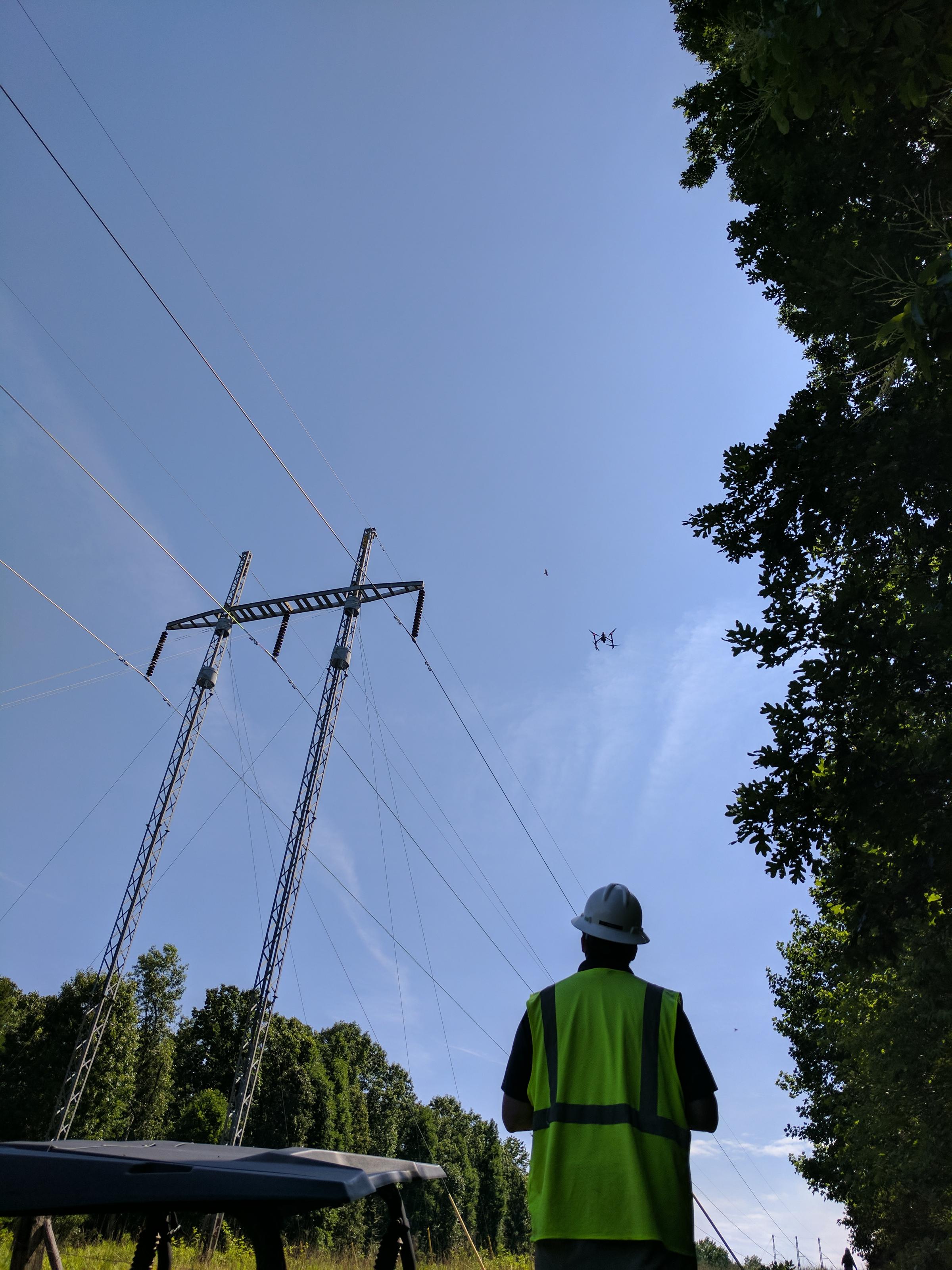Conversations with Experts - How Drone Research Evolved and What is Next
Categories:
In this installment of our discussions with leaders in tech, we sat to learn more about how drones and drone R&D have evolved over the last several years. This is a transcript of the conversation that has been edited for clarity and readability.
Have an idea for a future episode, or want to contribute? Email Drew McGuire (dmcguire@epri.com) with your ideas.
Podcast Transcript
Drew McGuire [00:00:05] : Hi, this is Drew McGuire at EPRI, thanks for joining me. Today, I want to sit down and learn more about EPRI’s research and the history of research into drones for the T&D industry.
To help me with this, I’m going to sit down with Dexter Lewis. He’s part of the EPRI team. Many of you know Dexter, he has been around leading UAS research for several years. He’s known across the industry as one of the leaders in this space. So it should be an insightful conversation. To get things started, let’s just start from the very beginning.
Dexter, can you tell us why we started UAS research and what were we trying to accomplish in the beginning?
Dexter Lewis [00:00:40] : All right thank you Drew. Well, I’ll start by saying that EPRI’s first drone report was published 20 years ago in the year 2000. But it wasn’t until 2014 that things really took off. Around that time, low cost, high quality, easy to operate drones were emerging for the hobbyist and consumer market. Now, we recognize that a lot of T&D inspection work is done from the air using manned aircraft.
These aerial inspection methods have advantages over ground-based approaches, primarily in speed, but also introduce risks when operating that close to overhead infrastructure. Recognizing the risks of those traditional inspection processes, I guess EPRI and several leaders in the utility industry thought that drones could be an attractive replacement option. But in all honesty, we had more questions and unknowns than we did answers.
To answer your question about what we were trying to accomplish: at the simplest level, we were trying to perform a better inspection with drones. We were looking for improvements with drones over traditional methods: in terms of safety improvements, were they a cheaper inspection method, were they faster, or did they give us just an overall better quality of inspection? And I’ll say that these are fundamental questions we try to answer before we integrate any new technology or approach. And I believe EPRI was and still is in a unique position to help our members answer these questions through lab testing, real world field studies, and overall shared experiences.
Drew McGuire [00:02:33] : Yeah, I think you’re right. EPRI is at a unique position in the industry where we can see a pretty broad range of what’s going on and help work together to address the problems.
But the way you describe that, that’s a big, broad challenge that we’re facing here from the ground up, from consumer grade equipment all the way to deployed systems in utility environments. So how did you even get started? How did you approach this problem from the beginning?
Dexter Lewis [00:03:00] : We started by building a team of interested utilities to begin a discussion. And a lot of our early engagements were focused on EPRI listening to our members. And it turns out that many utilities were asking the same questions. How does this drone technology work? How does it compare to our traditional or current methods and even things like how close can you fly a drone to a high voltage transmission line? How well do these things work in electromagnetic environment?
And I believe, you know, by listening to our members, we were able to really leverage our collaborative research model to target research projects that best answered these questions.
We started in our lab environment where we have the ability to test this technology safely and in a controlled manner. We still have projects where we do that. Then we moved into the field and at that time there was a ton of hype around the potential of the technology through listening to vendor presentations or service provider presentations or discussions.
There were a lot of anecdotal stories about how well this technology works, but not many documented scientific studies on the project. So we designed field tests where we compared drone inspections to manned aircraft inspections. We collected all kinds of data through this work where we really focused on trying to answer the question if drones can perform a better inspection.
I’d say fundamentally we did what we try to do with all our EPRI research. We try to provide our members knowledge based on nonbiased objective analysis to help them make informed decisions.
Drew McGuire [00:04:58] : That’s important because utilities have been making a lot of decisions around the technology in the last few years. It’s moved so quickly, you said we started back in the mid teens. Just in a few years we’ve made a lot of progress, and the landscape has changed so much around drones since then. There’s the new regulations, the technology has changed quickly, and utilities have really established drone programs by this point, in many cases.
You just described a lot of work that you’ve done so far. Can you summarize some of the key takeaways that you found?
Dexter Lewis [00:05:35] : I’ll start by saying that not all drones behave predictively in energized environments, testing in a controlled environment first can really help lower your risk before deploying on a real line. Also, drone inspection costs in the beginning were significantly more than inspection costs for traditional methods. If you look on a cost per mile basis. We’re still looking for ways to make that process more efficient.
One of those ways is through automation. Automation can help improve your inspection efficiency, but usually translates into more work on the back end in terms of reviewing your imagery.
You really need a way to efficiently handle the amount of imagery that these drones can collect, especially if they’re operating autonomously.
And finally, I’ll say that just giving a drone to an inspector or a field employee doesn’t always translate to a more efficient process. We learned you need to be smart about how you deploy this new aerial functionality to really capture all the value that it can provide.
Drew McGuire [00:06:55] : A lot of the unknowns that you discussed earlier are knowns now. We’ve answered those already, or at least we’ve begun to understand some of them. With that in mind, what does the future look like around drone research? What’s coming up next?
Dexter Lewis [00:07:06] : I suppose I’ll say that drones have made it through the hype cycle. They are tools that are here to stay and that are providing value to utilities today. However, I also think there is a lot of work that still needs to happen before we can fully realize the potential of this technology.
You mentioned how things have changed and continue to change. You know, the technology, the regulations, and the applications are evolving so fast. And it seems like a totally new landscape every six months. But we still can’t operate our drones long distances due to line of sight restrictions. And even if we could, we may likely be limited by our flight time or our wireless link limit.
And that’s a really big deal for our industry because we have so much linear infrastructure. A lot of our ongoing and future research is focused on being ready to take advantage of those beyond visual line of sight operations whenever they can be performed safely, and researching how best to deploy our drones in our current and future environment.
And kind of hinting at that, a lot of the work that we’re doing is focused on making our drone inspections more efficient through automation. There’s no doubt that drones can fly autonomously around the structure to capture imagery to perform an inspection. However, it’s really important that we understand when we’re leveraging those automated inspections that we’re getting the right picture to do a sufficient inspection.
We can’t jeopardize inspection quality for efficiency, and we have a project focused on that, where we’re trying to identify these data capture specifications to build confidence in these automated inspection models.
Now, through these automated inspections, a lot of times they generate a whole bunch of imagery and data. And the question is, what do you do with it? Because we don’t want to be building efficiencies on our data collection process, but then spending a lot of time reviewing imagery and data in the back office.
So drones have been a big driver in our push into artificial intelligence and image processing research. This is an area that we’ll be engaged with for many years to come.
It is also easy to think about the positive uses of drones, but they could also pose a threat or challenge to our industry. There are some unknowns related to the physical and cyber aspects of this technology. So how can we protect our infrastructure from malicious drone actors? And how can we be confident that the drones we’re using have adequate cybersecurity protections in place? We have active research in these areas as well.
In summary, there has been so much work from EPRI and the utilities over the last few years. This technology can really change the way that we as an industry perform work. And it’s exciting to think about what we will be able to accomplish in the future.
Drew McGuire [00:10:25] : Thanks, Dexter. I think that’s a really interesting way to see how we’ve started from the beginning of this research and where we are now and what’s coming up next. It’s good to back away from it sometimes and see the big picture. Thanks for walking us through it today.
So if you’re listening to this and have more questions, you can reach out and talk to Dexter at any point. Shoot him an email at dlewis@epri.com, or you can get in touch with me via email as well, dmcguire@epri.com.
If you have questions, feel free to reach out. Thanks for joining us today and we’ll talk with you later. Thank you.

